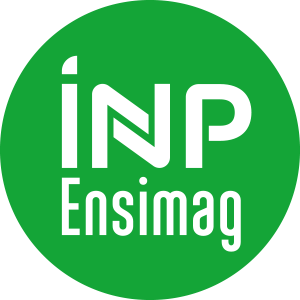Volumes horaires
- CM 18.0
- Projet -
- TD -
- Stage -
- TP -
- DS -
Crédits ECTS
Crédits ECTS 3.0
Objectif(s)
The discipline of shape and topology optimization has aroused a growing enthusiasm among mathematicians, physicists and engineers since the seventies, fostered by its impressive technological and industrial achievements. Nowadays, problems pertaining to fields so diverse as mechanical engineering, fluid mechanics or quantum chemistry are currently tackled with such techniques, and raise new, challenging issues.
The purpose of this course is to provide an introduction to the basic stakes of shape and topology optimization, from both theoretical and numerical viewpoints, and to provide an overview of modern techniques and developments, close to recent industrial concerns.
Eric BONNETIER, Charles DAPOGNY
Contenu(s)
This course is intended to go half-way between the theoretical and the practical, algorithmic stakes of shape and topology optimization.
The precise contents of the course will depend on the reactions of the audience; however, it is expected that the following theoretical topics will be discussed:
- Existence and non existence of an optimal design.
- Homogenization of partial differential equations, and applications in shape optimization.
- The method of Hadamard for defining shape variations and shape derivatives.
- The practical calculation of shape derivatives, involving the adjoint method.
The numerical issues tackled during the course include:
- The device of a basic, shape gradient algorithm.
- The use of a basic mesh deformation algorithm.
- The level set method for shape and topology optimization.
- Density-based topology optimization methods.
A basic knowledge in the mathematical analysis of PDE and numerical programming is assumed from the attendants; the first lectures will provide refreshers about a number of such issues.
Evaluation : Examen écrit + examen oral (2h)
Rattrapage : Examen écrit + examen oral (2h)
The grading will be based on a written exam and / or an oral presentation of a research article (2h).
The re take will be the same exercise.
L'examen existe uniquement en anglais
Le cours est programmé dans ces filières :
- Parcours de master - Master Math. et Applications - Semestre 9 (ce cours est donné uniquement en anglais)
Code de l'enseignement : WMM9AM28
Langue(s) d'enseignement : 
Vous pouvez retrouver ce cours dans la liste de tous les cours.
[1] G. Allaire, C. Dapogny, and F. Jouve, Shape and topology optimization, Hal preprint:
https://hal.archives-ouvertes.fr/hal-02496063, (2020).
[2] G. Allaire and M. Schoenauer, Conception optimale de structures, vol. 58, Springer, 2007.
[3] M. P. Bendsoe and O. Sigmund, Topology optimization: theory, methods, and applications, Springer Science & Business Media, 2013.
[4] C. Dapogny, An introduction to shape and topology optimization, exercise sessions available at:
https://github.com/dapogny/GDR-MOA-Course, 2018.
[5] , An introduction to shape and topology optimization, online course available at:
https://hal.archives-ouvertes.fr/cel-01923097v1, 2018.
[6] F. Hecht, New development in freefem++, Journal of numerical mathematics, 20 (2012), pp. 251--266.
[7] A. Henrot and M. Pierre, Variation et optimisation de formes: une analyse géométrique, vol. 48, Springer Science & Business Media, 2006.
[8] B. Mohammadi and O. Pironneau, Applied shape optimization for fluids, Oxford university press, 2010.



